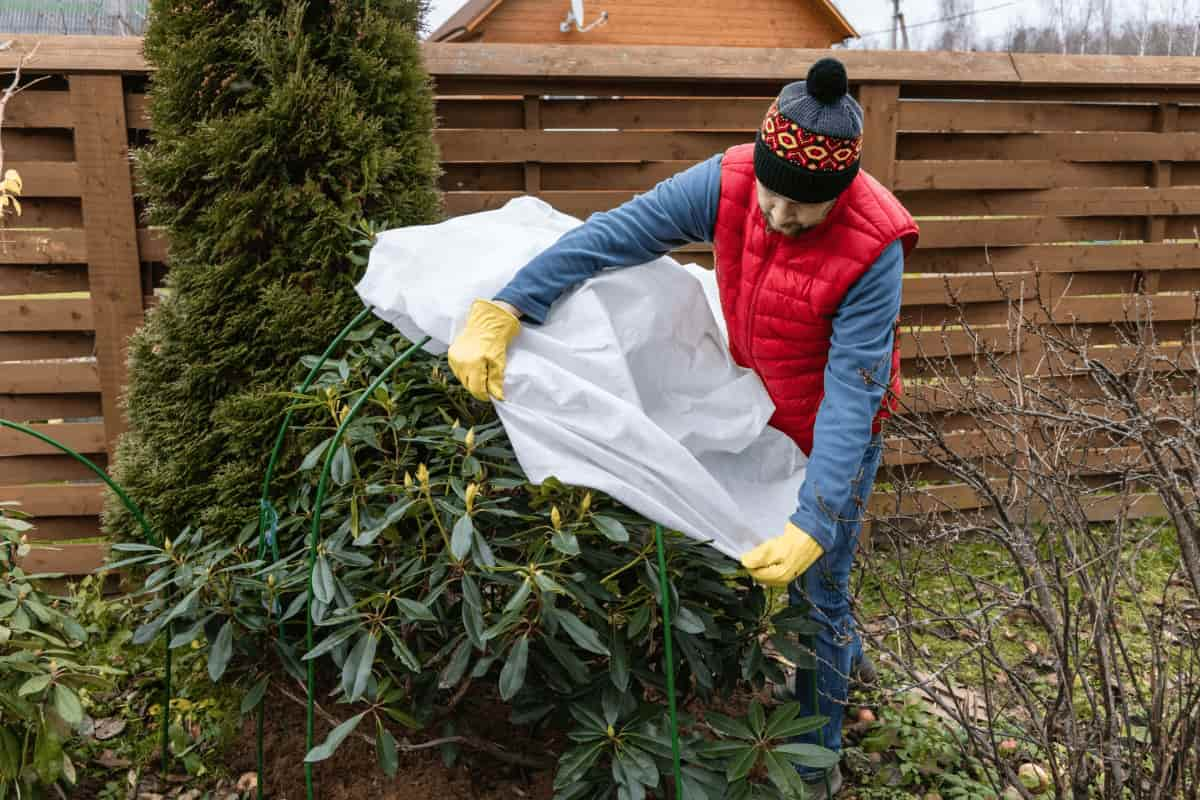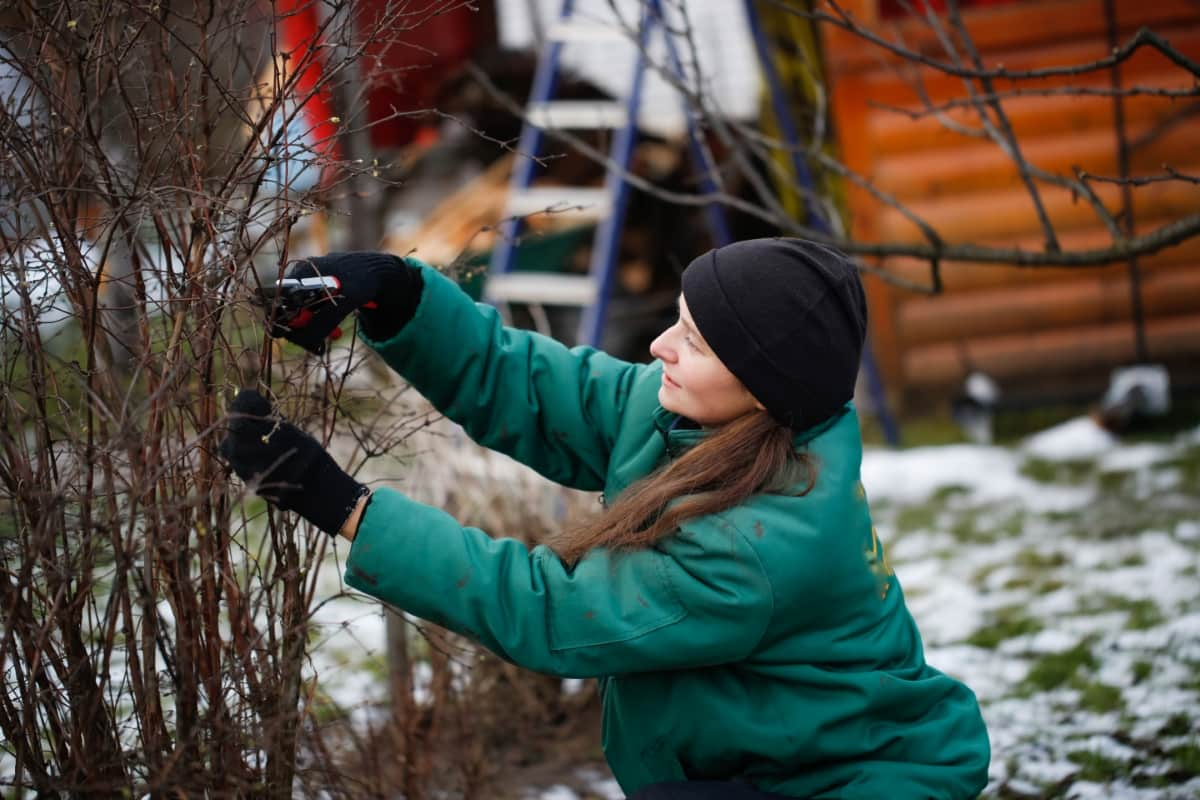During the winter months, outdoor plants are subjected to an environment that is tricky for them. Plants have difficulty surviving in cold temperatures, particularly during the winter. As a result, water can freeze inside the plant’s cells, causing the cells to thaw from the inside, causing the plant to wilt and die.

7 Causes of Dying Plants in Winter
Frost-damaged plants are easy to spot since they appear limp, blackened, and distorted due to cold weather damage. While each plant has a different tolerance to cold temperatures, it is still best to take extra care of your outdoor plants during the cold winter.
Due to Too Much Water
The majority of plants go dormant during the winter months. In terms of plant care, keeping your plants at rest throughout this stage is important, as the amount of water they require decreases during this period. You’ve probably been overwatering your plant if you notice fungus gnats, pesky little flies laying their eggs in moist soil, and yellowing leaves.
In winter, the daytime is shorter, and the rate of photosynthesis is lower because the days are shorter. During their active growth, plants require a lot of water, but not here. Do not water blindly; instead, feel the soil before watering. If it is moist, wait a day or two before watering. However, make sure you thoroughly water the plant when you water it.
Due to Low Humidity
It is ideal for indoor plants to be kept at a humidity level of about 50%. It goes down to about 10-20% during winters when temperatures are low. Use a humidifier if you have one at home to increase the humidity inside your indoor space. As an alternative, you can group your plants to keep them together. As a result of transpiration, plants release moisture into the air, and if they are kept closer to each other, other plants will be able to capture this moisture better. Finding a humid place in your home, like next to your kitchen or bathroom.
Due to Cold Weather in Outdoor Plants
When a plant is suddenly exposed to cold weather, it can experience a feeling known as plant shock. There are several symptoms of plant shock, such as the leaves turning yellow or brown and drooping down. Eventually, they will start to droop and even turn brown if they are not taken care of. Depending on the severity of the wilting, the plant may die. In some cases, the plant leaves may be dry and fall off. Here are a few preventives you can do to help your plants,
- Water your plants thoroughly before the first frost arrives to keep them healthy. A dry soil is more likely to be damaged by freezing temperatures than a moist soil.
- The mulch around your plants should comprise organic matter like straw, leaves, or bark chips. It will insulate the roots and prevent them from being exposed to cold air during the winter.
- The best way to protect tender plants is to build a temporary enclosure around them using burlap, frost cloth, or a large awning.
Due to Lack of Sunlight for Indoor Plants
Providing adequate lighting for indoor plants in the winter can also be challenging. Houseplants are popular in the winter and tend to grow slower than in the summer, which is good because many can tolerate lower light levels. If they don’t get enough light, some houseplants will grow leggy. You should know your plants’ light requirements to provide them with adequate light. Remember that not all houseplants need to be placed in south-facing windows or will be fine in dark corners.
In case you missed it: 7 Causes of Dying Papaya Plants and How to Fix Them?

When a houseplant develops weak and leggy growth, it is not getting enough light. Add a grow light to plants in winter if they are not on a sunny window. Many inexpensive indoor plant lights are available, so you don’t need to spend much. An inexpensive fluorescent light fixture and plant grow light bulbs can also be used to make your own grow lights for houseplants.
Due to Over-fertilising
Many gardeners reach for fertilizer when their plants aren’t performing well. A plant may not require extra food, and too much fertilizer can harm it. Most established garden plants only require fertilizer once or twice a year when actively growing. Some exceptions exist to this rule, such as plants that require a lot of energy to provide fruit, flowers, or edible leaves. These plants benefit from regular feedings. A half-strength fertilizer is adequate for ferns and non-growing indoor plants.
Plant labels and fertilizer containers contain information about fertilizer application rates and needs. In the winter, most houseplants go dormant, so they don’t require any feeding. As a general rule, do not fertilize houseplants during the winter. When indoor plants are growing in spring and summer, fertilization is ideal. It is best to follow this schedule if you have healthy plants. Dilute your fertilizer by around half if you feel your plants lack nutrients. During winter, over-fertilizing your plants can cause distress and even death.
Due to Pests
It is also possible that a distressed-looking plant is infested with bugs. The most common culprits are fungus gnats, spider mites, and mealybugs. In damp soil, fungus gnats thrive and are hard to miss since they are constantly swatted away. Tiny spider mites can hide beneath foliage, making them harder to spot; white webs reveal their presence.
The mealybug can be spotted where the leaf meets the stem as a mass of fuzzy cotton or mold. Neem oil is a safe pesticide that’s commonly used. You can use it multiple times to eliminate an infestation by wiping leaves and stems with it. Replace the top two inches of soil and water with a solution that contains mosquito bits to kill fungus gnat larvae and catch them with sticky fly traps.
Due to Repotting
Indoor plants shouldn’t be repotted during the winter unless it’s absolutely necessary. The growth of houseplants in winter is usually weak and leggy, so transplanting them in winter can trigger new growth. Plants can suffer through the winter if they are repotted because they are put under great stress. During the winter, you can repot a houseplant if the soil dries out almost as soon as you water it or if it is suffering from pot-boundness.
In case you missed it: 7 Causes of Dying Orchids and How to Fix Them?

Conclusion
Winter is the time when most popular indoor plants go dormant. However, we can still have a chance to keep them alive until spring. As discussed above, these factors significantly affect the plant’s growth and health throughout the winter. However, you may need to research the plants’ requirements before changing their surroundings since every plant has different needs.
- Ultimate Guide to Ossabaw Island Hog: Breeding, Raising, Diet, and Care
- Ultimate Guide to Juliana Pig: Raising Facts, Size, Diet, Care, and Lifespan
- Raising Lleyn Sheep: Disadvantages, Price, Uses, Characteristics, and Care
- Ultimate Guide to Meishan Pig: Breed Facts, Breeding, Raising, and Care
- Ultimate Guide to Teacup Pigs: Raising, Diet, Lifespan, Cost, and Care
- Guide to Raising Poll Dorset Sheep: Facts, Profile, Characteristics, Uses, and Care
- Ultimate Guide to Bighorn Sheep: Characteristics, Diet, Lifespan, Breeding, and Lifecycle
- Ultimate Guide to Raising Katahdin Sheep: Farming Facts, Breed Profile, Uses, and Care
- Ultimate Guide to Raising Oreo Cows: Belted Galloways Farming Facts, Profile, Uses, and Care